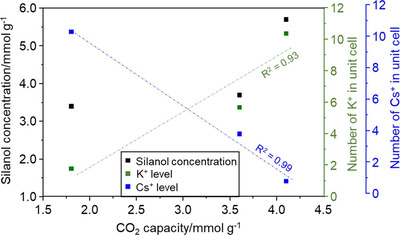Ask for a reprint
email :
* Give your email
2023
ACL
|
Sajjad Ghojavand, Eddy Dib, Jérôme Rey, Ayoub Daouli, Edwin B.Clatworthy, Philippe Bazin, Valérie Ruaux, Michael Badawi, Svetlana Mintova, 'Interplay between alkali-metal cations and silanol sites in nanosized CHA zeolite and implications for CO2 adsorption', CommunicationsChemistry 6 134 (2023) doi:10.1038/s42004-023-00918-1
Silanols are key players in the application performance of zeolites, yet, their localization and hydrogen bonding strength need more studies. The effects of post-synthetic ion exchange on nanosized chabazite (CHA), focusing on the formation of silanols, were studied. The significant alteration of the silanols of the chabazite nanozeolite upon ion exchange and their effect on the CO2 adsorption capacity was revealed by solid-state nuclear magnetic resonance (NMR), Fourier-transform infrared (FTIR) spectroscopy, and periodic density functional theory (DFT) calculations. Both theoretical and experimental results revealed changing the ratio of extra-framework cations in CHA zeolites changes the population of silanols; decreasing the Cs+/K+ ratio creates more silanols. Upon adsorption of CO2, the distribution and strength of the silanols also changed with increased hydrogen bonding, thus revealing an interaction of silanols with CO2 molecules. To the best of our knowledge, this is the first evidence of the interplay between alkali-metal cations and silanols in nanosized CHA.
|

|